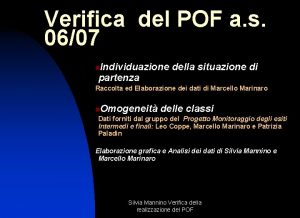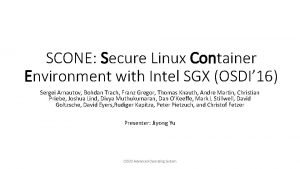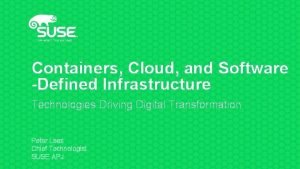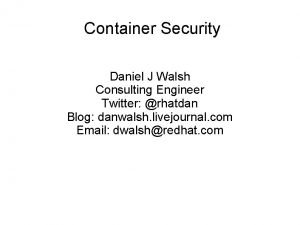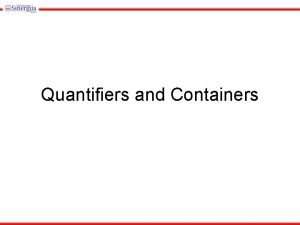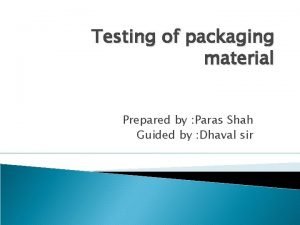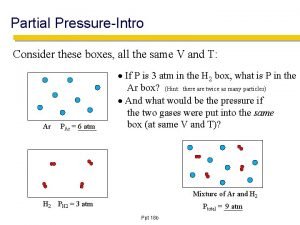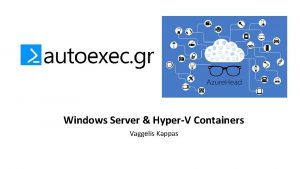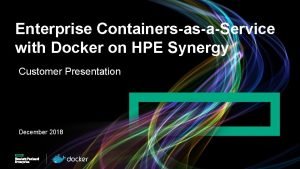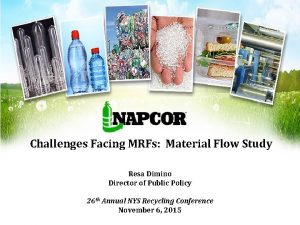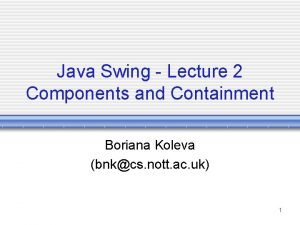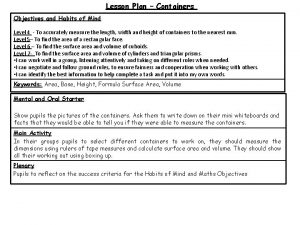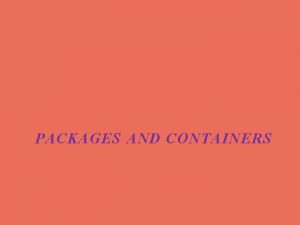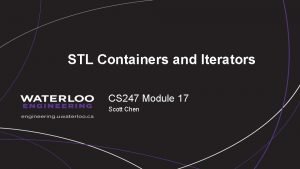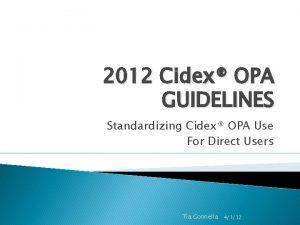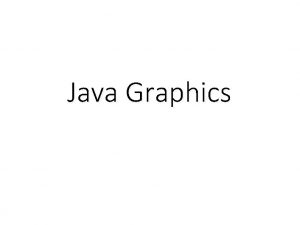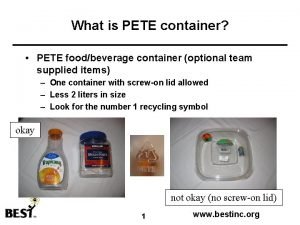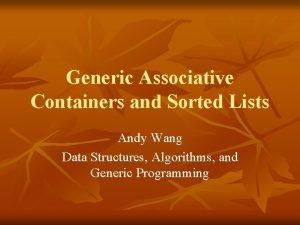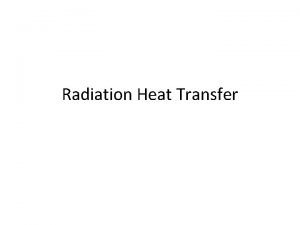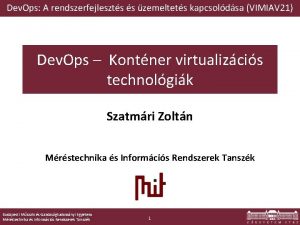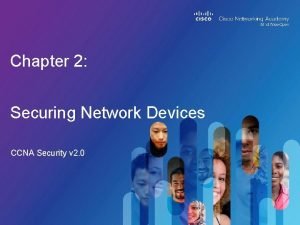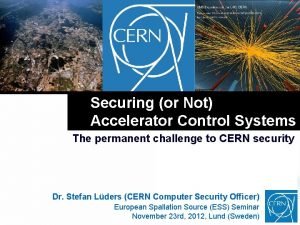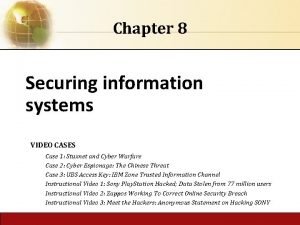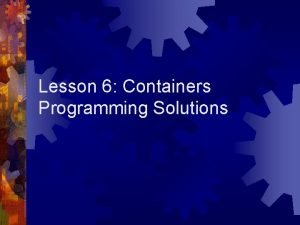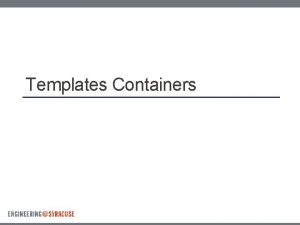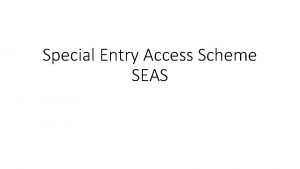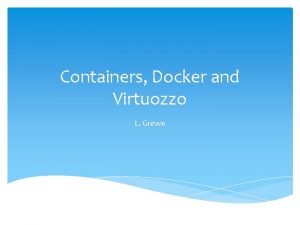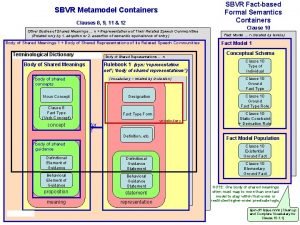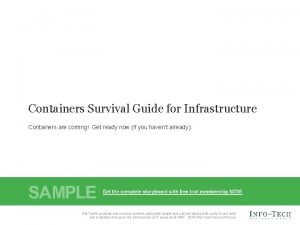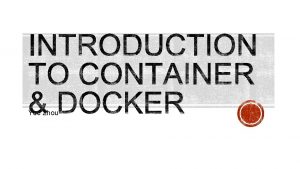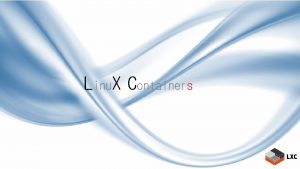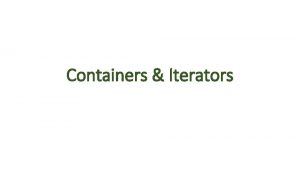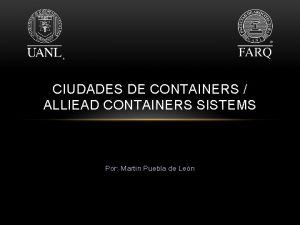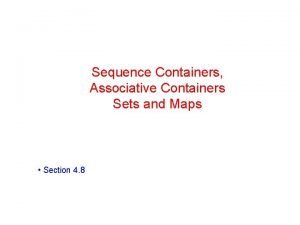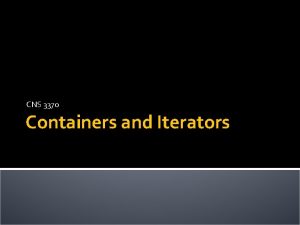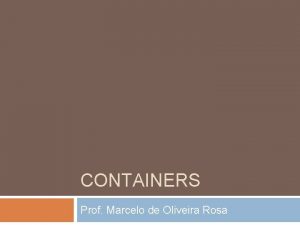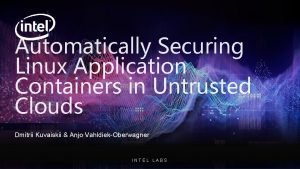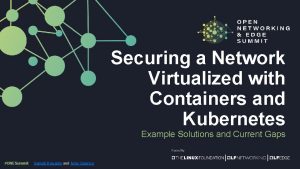Securing Containers on the High Seas Jack Mannino






































- Slides: 38

Securing Containers on the High Seas Jack Mannino & Abdullah Munawar

Who Are We? Abdullah Munawar Jack Mannino • Director of Professional Services at n. Visium • Helps clients build application security programs • CEO at n. Visium, since 2009 • Helps make software security scale • Hobbies: Scala, Go and Kubernetes

Container Security Lifecycle Design Build Ship Run

Containers are __

Containerized Architecture

Security Opportunities & Optimism Reduced Attack Surface Immutable Infrastructure Isolation by Design Automation and Repeatability

Who Does What Now?

Design

Design Model your containerized architecture and identify where security control should be present. Understand how the system will be used and abused Beware of Bounded Contexts or tightly-coupled components!

Secure Architecture ü ü ü ü Orchestration & Management - Control Plane Network Segmentation & Isolation Encrypted communications Authentication (container & cluster-level) Identity Management & Access Control Secrets Management Logging & Monitoring

Picking the Right Container Runtime • Open Container Initiative (OCI) spec promotes a broader set of container tech (life beyond Docker) • Isolate containerized resources differently • Goal is to prevent escaping from the container • Isolation via Namespaces & Control Groups • Isolation via Hypervisor https: //blog. jessfraz. com/post/containers-security-and-echo-chambers/

Leveraging Design Patterns for Security We can solve security issues through patterns that lift security out of the container itself. Example – Service Mesh.

Build

Securing the Build Process • Build steps focus on code repositories and container registries • Run Tests -> Package Apps -> Build Image • Build first level of security controls into containers • Orchestration & management systems can override these controls and mutate containers through an extra layer of abstraction

Base Image Management • Focus on keeping the attack surface small • Use base images that ship with minimal installed packages and dependencies • Use version tags vs. image: latest • Use images that support security kernel features (seccomp, apparmor, SELinux) $ grep CONFIG_SECCOMP= /boot/config-$(uname -r) $ cat /sys/module/apparmor/parameters/enabled

Limiting Privileges • More often than not, your container does not need root • Often, we only need a subset of Example – Ping command requires CAP_NET_RAW We can drop everything else. capabilities • Limit access to underlying host resources (network, storage, or IPC) docker run -d --cap-drop=all -cap-add=net_raw my-image

Kernel Hardening • Restrict the actions a container can perform • Seccomp is a linux kernel feature that allows you to filter dangerous syscalls • Docker has a great default profile to get started

Mandatory Access Control (MAC) • SELinux and App. Armor allow you to set granular controls on files and network access. • Limits what a process can access or do • Logging to identify violations (during testing and production) • Docker leads the way with its default App. Armor profile

Container Package Management • Vulnerabilities can possibly exist in: • Container configurations • Container packages • Application Libraries • Solutions: • Clair • Dependency Check • Brigade • Commercial tools

Ship

Ship • • Securely move the container from registry -> runtime environment Controlled container promotion and deployment Validate the integrity of the container Validate security pre-conditions

Validating Integrity & Signing Builds • Ensures the integrity of the images and trusted publisher. • Sign to validate pipeline phases • Example – Docker Content Trust & Notary • Consume only trusted content for tagged Docker builds

Validating Security Pre-Conditions • Allow or deny a container's cluster admission • Centralized interfaces and validation • Mutate a container's security before admission • Example – Kubernetes calls this a Pod. Security. Policy

Run

Run Typically, containers are managed, scheduled, and scaled through orchestration systems. Kubernetes, Mesos, Docker Swarm, AWS ECS, etc. • • • Cluster/Service authentication Identity Management & Access Control Policy & Constraint Enforcement Propagation of secrets Logging & Monitoring Example – Kubernetes Control Plane

Control Plane Hardening • • Control plane manages & schedules containers Critical infrastructure; keys to the kingdom Restrict network access to control plane components Isolate components and containerized workloads

Management APIs • Deploy, modify, and kill services • Run commands inside of containers • Kubernetes, Marathon, and Swarm API work similarly • Frequently deployed without authentication or access control

Authentication • Authenticate subjects (users and service accounts) to the cluster • Authentication occurs at several layers • Authenticating API subjects • Authenticating nodes to the cluster • Authenticating services to each other Avoid sharing service accounts across multiple services! Example – K 8 s JWT Generator

Authorization & Access Control K 8 s - Create a Role • Subjects should only have access to the resources they need • Limit what a single hostile user or container can achieve) • Multiple vantage points - to the API, between containers, between control plane components K 8 s - Bind a Subject to the Role

Logging and Monitoring • • Container lifecycle is short and unpredictable Visibility through telemetry and logs Tag and label assets for context and de-duplication Focus on visibility at these levels • Application • Operating System • Container • Orchestration & Management • Infrastructure

Secrets Management • Safely inject secrets into containers at runtime • Reduced footprint for leaking secrets • Dynamic key generation and rotation is ideal • Anti-patterns: • Hardcoded • Environment variables • Limit the scope of subjects that can retrieve secrets

Secrets Management Docker docker run –it –e “DBUSER=dbuser” –e “DBPASSWD=dbpasswd” mydbimage echo <secret> | docker secret create some-secret Kubernetes kubectl create secret generic db-user-pw --from-file=. /username. txt -from-file=. /password. txt kubectl create –f. /secret. yaml

Nothing is Perfect

Beware of Plain Text Storage Prior to 1. 7, secrets were stored in plain text at-rest As of v 1. 7+, k 8 s can encrypt your secrets in etcd $ ls /etc/foo/ username password Not perfect at all, either. $ cat /etc/foo/username admin $ cat /etc/foo/password 1 f 2 d 1 e 2 e 67 df

Dynamic Loading & Rotation https: //blog. openshift. com/vault-integration-using-kubernetesauthentication-method/

Policy & Constraint Enforcement Setting • Harden by applying a Security Context at the pod or container level • Mutate the container's configuration as needed • i. e- overrides a Dockerfile Pod. Security. Context Allow Privilege Escalation X Capabilities X Privileged Read-Only Root Filesystem X Run as Non Root X X Run as User X X SELinux Options X FS Group X Supplemental Groups X Example – K 8 s Security. Context

Conclusion • Secure your container ecosystem and supply chain, not just the runtime • You probably don't need root – start with minimally privileged containers • Focus on layered security and strong isolation • Ensure visibility from a developer's laptop to running in production

Thanks! Keep in Touch Abdullah Munawar @amanofwar Abullah@nvisium. com Jack Mannino @jack_mannino Jack@nvisium. com
 Jack mannino
Jack mannino Vincent mannino
Vincent mannino Silvia mannino
Silvia mannino Jan mannino
Jan mannino Jack and the beanstalk character traits
Jack and the beanstalk character traits Where do you need high friction when climbing
Where do you need high friction when climbing John hattie effect size
John hattie effect size Linux sgx
Linux sgx Ancient greek containers
Ancient greek containers Self sealability test for rubber closures
Self sealability test for rubber closures Containers as a service
Containers as a service Rigid sterilization containers
Rigid sterilization containers Here are 4 containers water is poured at a constant rate
Here are 4 containers water is poured at a constant rate Containers for change
Containers for change Walsh consulting engineers
Walsh consulting engineers Quantifiers containers
Quantifiers containers Accompaniment in food
Accompaniment in food Collapsibility test for plastic containers
Collapsibility test for plastic containers How to find partial pressure from total pressure
How to find partial pressure from total pressure Windows perflogs
Windows perflogs Hpe greenlake containers
Hpe greenlake containers Chdpe
Chdpe Java containment hierarchy
Java containment hierarchy Containers lesson plan
Containers lesson plan Returnable containers accounting
Returnable containers accounting Module 1. stl sequential containers
Module 1. stl sequential containers Two containers
Two containers Opa
Opa Swing graphics
Swing graphics Pete container
Pete container Associative containers
Associative containers Lcl container significato
Lcl container significato What goes in black pharmaceutical waste containers
What goes in black pharmaceutical waste containers Four containers were filled with warm water
Four containers were filled with warm water Linux containers (lxc)
Linux containers (lxc) Securing the northwest territory
Securing the northwest territory Defence in depth
Defence in depth Securing
Securing Securing information systems
Securing information systems


